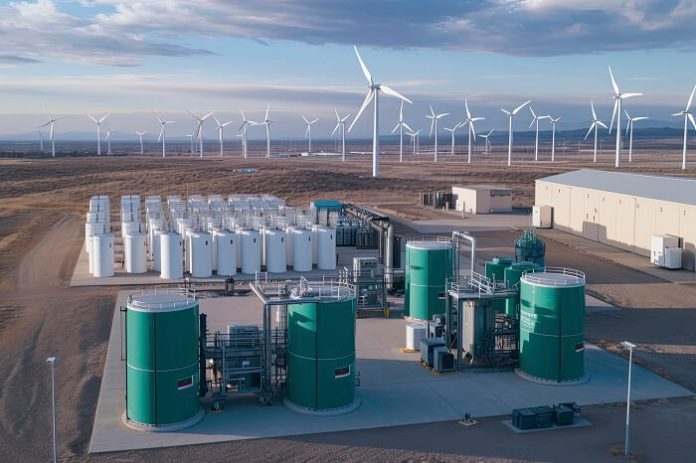The Ministry of New and Renewable Energy (MNRE) has introduced a comprehensive program with a budget of ₹2 billion, set to run until FY 2025-26. It will stimulate innovation in green hydrogen production and usage across diverse sectors.
MNRE Issues Guidelines aligns with the National Green Hydrogen Mission (NGHM) and aims to explore new, sustainable avenues for hydrogen generation and utilization.
Focus Areas
- Decentralized Hydrogen Production
- The program focuses on decentralized hydrogen production using advanced methods, including:
- Floating solar platforms
- Biomass conversion
- Wastewater treatment processes
The objective is to foster hydrogen applications in various sectors such as offgrid energy, cooking, heating, and industrial uses.
Additionally, the MNRE is prioritizing the replacement of fossil-fuel-based hydrogen in industries like ammonia production and petroleum refining. Plans to integrate green hydrogen into city gas systems are also underway.
The Guidelines
The MNRE issues guidelines to outlined clear implementation guidelines for the program, covering all stages from project selection to execution.
These steps include:
Project Selection and Proposal Submission: Scheme Implementing Agencies (SIAs) will manage the call for proposals and select projects based on innovation potential, scalability, financial support structure, and projected hydrogen output.
Evaluation and Approval: Proposals submitted by Executing Agencies (EAs)—such as CPSUs, State PSUs, NGOs, and Indian R&D institutions—will undergo screening by the SIA’s Screening Committee, followed by assessment by a Project Appraisal Committee (PAC) and final approval from the NGHM Advisory Group.
Funding and Execution: After MNRE’s administrative approval, the SIA will issue Letters of Award (LoA) to the selected EAs. Financial support, known as Central Financial Assistance (CFA), will be disbursed in phases: 20 percent on LoA issuance, 70 percent upon achieving milestones, and the remaining 10 percent upon project completion.
The SIA, which could be the National Institute of Solar Energy (NISE), National Institute of Bio Energy (NIBE), or Solar Energy Corporation of India (SECI), will oversee each project. It will earn a fee of 0.5 percent of the sanctioned amount.
The SIA must also submit a Project Completion Report (PCR) to the PAC within a month of project completion.
New R&D Boost
In November 2024, the MNRE proposed establishing Centres of Excellence (CoE) under the NGHM to advance R&D in green hydrogen production, storage, and utilization. The ministry plans to offer up to fifty percent funding for projects at these centers. This initiative aims to create hubs of innovation that will drive India’s green hydrogen transition.
As reported by renewablewatch.in, the MNRE is setting a clear course for green hydrogen innovation in India through the program. This initiative paves the way for cleaner energy sources and sustainable industrial transformation.

































